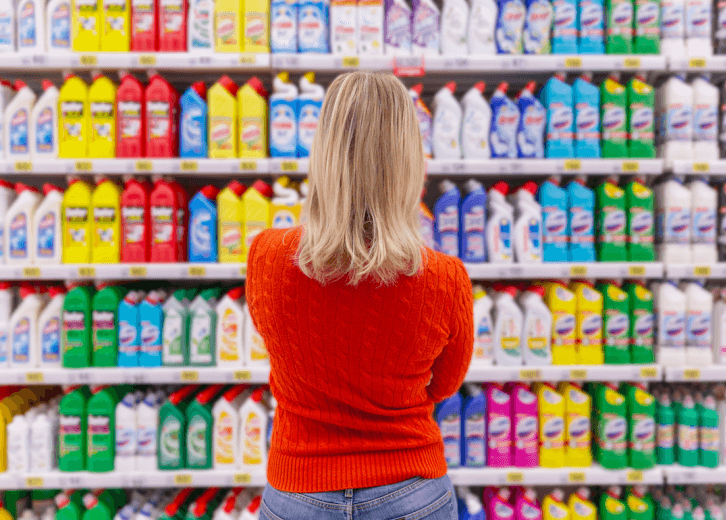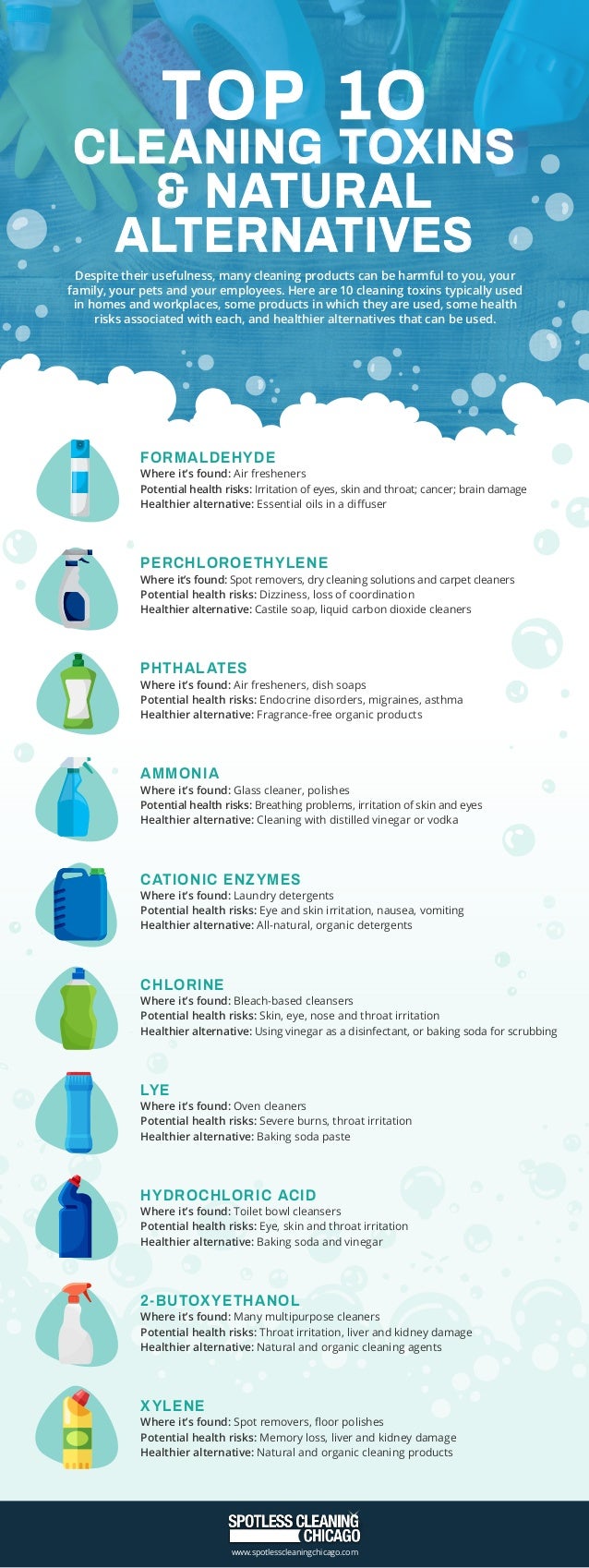Many ordinary cleaning products contain toxins that can harm the environment as well as your health. These hazardous chemicals have been connected to many serious conditions, including cancer, neurotoxicity, hormone disruption and asthma.
Top 10 Cleaning Toxins & Natural Alternatives created by Spotless Cleaning Chicago, a provider of commercial cleaning services in Chicago.
When you use them day after day, their cumulative impact on the body can be substantial. For this reason, an increasing number of businesses and consumers are looking for natural alternatives to toxic chemicals. With natural cleaners, you can still scrub dirt and grime from spaces — but without the harmful side effects.
Examples of Toxic Ingredients to Avoid
Where do you begin eliminating your environment of potential hazards? Start by looking at what’s in your current cleaning solutions. When you’re reading the labels on cleaning products, there are specific chemicals you should watch for — think of them as red flags signaling hazard to you and/or the planet. Here are some examples:
- Formaldehyde — If you rely on air fresheners to cover unpleasant household smells, there’s a good chance you’re using products with formaldehyde. This chemical can aggravate your skin, throat and/or eyes. It’s also been linked with more serious problems, such as brain damage.
- Ammonia — The everyday cleaning product that gives your windows a sparkly shine could also be irritating your respiratory system, at least if it uses ammonia. Ammonia has been connected to asthma as well as to breathing and lung problems in the elderly. When combined with bleach, it becomes a poisonous gas.
- Hydrochloric acid — Common in toilet bowl cleaners and other everyday cleaning products, hydrochloric acid is a corrosive chemical associated with eye, skin and throat irritation.
- Chlorine — Found not only in cleaning products, but also in city water supplies, chlorine is a toxin that may be coming at you from multiple sources. It’s typically in the tap water you use for washing dishes and clothes and for bathing. On top of that, it’s often found in toilet bowl cleaners, scouring powders, laundry whiteners and more. The problem is, chlorine can possibly irritate the skin, eyes, nose and throat. It can also act as a thyroid disrupter.
The four examples listed here are only a handful of the dangerous substances often lurking in mainstream cleaners. To learn more about them and other toxins, take a look at the accompanying infographic. In it, you’ll find a list of the top 10 cleaning toxins found today, along with suggestions for natural cleaners you can use in their place.
Everything have a better alternative for example, movies can be viewed in cinemas but why you have to wait when you can get it free from 1Movies, similarly why opt harmful and toxic chemicals when you can have a better alternative.
Author bio: Juan Padilla is the founder of Spotless Cleaning Chicago, an office and commercial cleaning company. With several years of experience in the cleaning industry, his focus is on improving the janitorial industry and helping other small businesses understand their customers and how to succeed.
Write for us
HeckHome does not necessarily share views expressed by opinion writers and advertisers. HeckHome regularly invites Bloggers across the World to “interior design”+ “write for us” in order to present their creative ideas.
Emily Hawthorne
Related posts
Stay connected
Today's pick
- Things to Remember While Designing Your Custom Modular Kitchen in GurgaonGurgaon now known as Gurugram is the second largest city in the state of Haryana and is a reflectiossn of an ideal modern city with futuristic goals. Witnessing rapid urbanization, it has also emerged as a hub for contemporary homes, with homeowners seeking innovative and... The post Things to Remember While Designing Your Custom Modular […]


